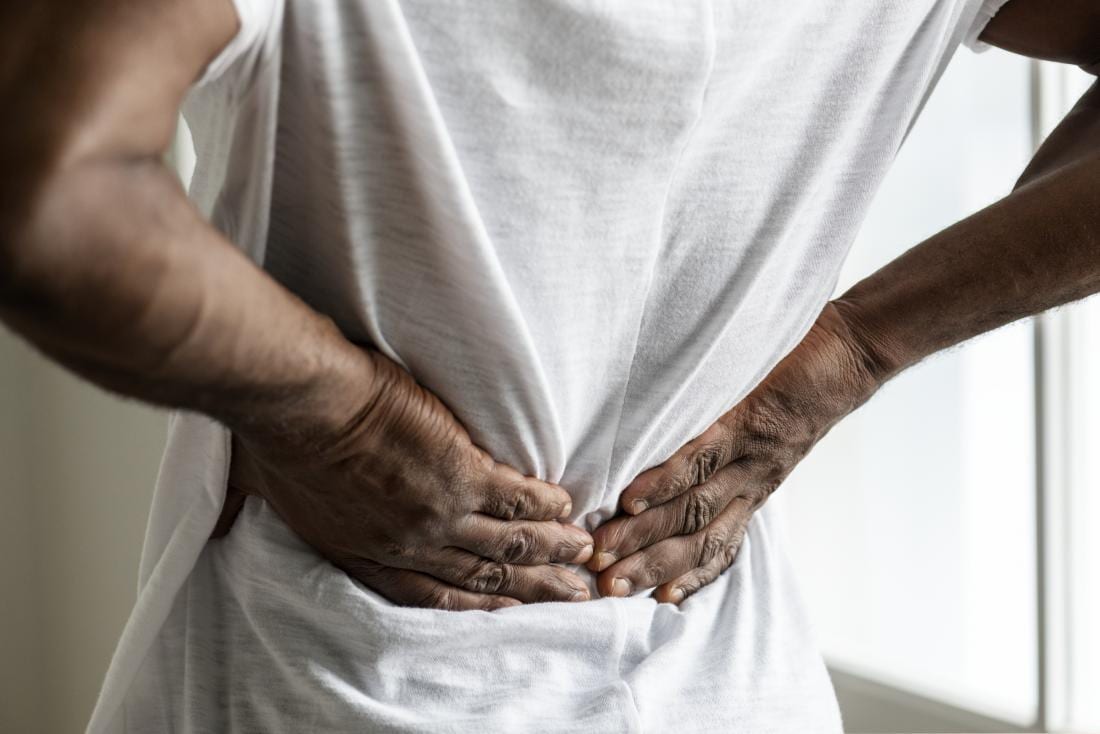Low back pain is one of the most common issues globally. Up to 80% of people experience back pain at least once in their life. Depending on the individual, low back pain can present very differently. Some may have a localised stabbing pain or others a generally dull ache. For clarity’s sake, the low back is located above the pelvis and below the ribcage.
With many more people at home and becoming more sedentary, cases of low back pain are likely to increase. Fortunately, for those with low back pain, we have 5 scientifically proven tips to help you manage it at home.
Reduce time in bed and sitting
“Rest will help your back pain”
Although this may be true for the first 1-2 days after the onset of pain, long term inactivity is harmful. Sitting and lying down for long periods of time will lead to increased stiffness and reduced strength/endurance in the back.
Gradually increase your physical activity through simple activities such as walking or even household chores is recommended. Although this may be uncomfortable at first, regaining confidence and rebuilding your strength will fasten your recovery.
Exercise
The most common low back pain cases we see are related to a lack of strength and stability around the low back region. In many circumstances, this will manifest in muscular spasms parallel to the spine. Fortunately, physical activity such as body-weight exercises and walking can help re-strengthen the back.
Some examples of body-weight exercises that can be performed include:
- Pilates
- Yoga
- General strengthening (e.g. bridges, sit to stands)
- Stretches
These can be commenced as early as 24 hours after injury. Although it may be painful intially, your low back pain should begin to settle slowly as you get stronger and recover. If your pain is continuing to get worse, we would recommend you go to step 5.
Managing your stress
More and more research has recently suggested that low back pain is complicated and multifactorial. Long story short, this means that the intensity of your pain may not necessarily correlate to the amount of “damage” in your spine. There are many factors which contribute to how severe your pain is including smoking, mood and even stress.
Simply put, there are many neural connections between your brain and your back’s structures (e.g muscles, ligaments). If you become stressed, your brain enters a heightened state of sensitivity. Once this happens, the brain begins to amplify the connection with the low back. Unfortunately, this heightened state has the capacity to increase the amount of pain you perceive.
To reduce stress aim to:
- Remove your stressors: Identify your source of stress and try to combat it. If you are stressing about \work, temporarily cease work and come back to it after.
- Find your stress relievers: Notice what activities help you de-stress and continue to perform them. Although we are all unique, some examples can include walking, meditating and even gardening.
Maintain good sitting posture
Whilst at home, it is important that we are aware of our sitting postures. This does not mean you need to sit completely upright like a meerkat. However, you do need to be aware of avoiding certain positions such as lumbar hypo-lordosis (flat lower back) and hyper-kyphosis (rounded upper back).
By adopting these certain postures, this can place additional stress through the structures in your back. These stresses can cause muscles to spasm and others to weaken. If you are noticing these signs, pinpoint what may be causing this and mitigate it. For example, if you are slouching over at your workstation, it may be worthwhile repositioning the computer to a more ergonomic position.
Seeing a physiotherapist if the pain is persisting
If your pain is not improving, it is important to see a physiotherapist to diagnose and manage your problem. Physiotherapists commonly treat low back pain and will guide you through your recovery process.
Your physiotherapist will go through questioning and a physical examination to better understand the root cause of your problem. Afterwards, they will inform you of your situation and begin to treat your back.
Depending on your symptoms, treatment may involve some or all the following:
- Hands-on treatment
- Electrophysiological stimulation
- Specific exercise and rehabilitation
- Clinical Pilates
- Dry needling
After reading this article, we hope that you have a clearer understanding of how low back pain can be managed. If you need help with your back pain please do not hesitate in booking with us through Tower Physiotherapy.








